 What Child is This? (Sherlock Holmes Adventure #5) by Bonnie MacBird, Frank Cho
What Child is This? (Sherlock Holmes Adventure #5) by Bonnie MacBird, Frank Cho Format: ebook
Source: purchased from Amazon
Formats available: hardcover, paperback, ebook, audiobook
Genres: historical fiction, historical mystery, holiday fiction, holiday mystery
Series: Sherlock Holmes Adventure #5
Pages: 228
Published by Collins Crime Club on October 13, 2022
Purchasing Info: Author's Website, Publisher's Website, Amazon, Barnes & Noble, Kobo, Bookshop.org, Better World Books
Goodreads
It’s the season of peace and goodwill, but a Victorian Christmas is no holiday for the world’s most popular detective in this new book from Bonnie MacBird, author of the bestselling Sherlock Holmes novel Art in the Blood.
It’s Christmastime in London, and Sherlock Holmes takes on two cases. The angelic three-year-old child of a wealthy couple is the target of a vicious kidnapper, and a country aristocrat worries that his handsome, favourite son has mysteriously vanished from his London pied à terre. Holmes and Watson, aided by the colourful Heffie O’Malley, slip slide in the ice to ensure a merry Christmas is had by nearly everybody . . .
My Review:
 I wasn’t expecting to find a Sherlock Holmes story to include in my personal Ho-Ho-Ho Readathon. Not that I wasn’t willing to, considering how much I love Sherlock Holmes stories, but rather that Holmes can be a bit of a curmudgeon at the best of times.
I wasn’t expecting to find a Sherlock Holmes story to include in my personal Ho-Ho-Ho Readathon. Not that I wasn’t willing to, considering how much I love Sherlock Holmes stories, but rather that Holmes can be a bit of a curmudgeon at the best of times.
He may not be, in any way, a miser like Ebenezer Scrooge but he’s certainly more than capable of bah-ing and humbug-ing with the best of them. Or the worst of them as the case might be.
And then I remembered that the Holmes series I just started earlier this month with Art in the Blood, included a Holmes’ Christmas tale, and to paraphrase the Great Detective himself, the game was afoot.
What Child is This? (yes, the question mark is part of the title and it’s driving me batty) connects two stories with loosely similar themes under the banner of the holiday season and runs away with them. Or sets them on fire. Or a bit of both.
The Marquis of Blandbury, Henry Weathering, comes to Holmes because his adult son Reginald hasn’t written to his mother in weeks, and the woman is beside herself because it’s so very much not like him. Even dear-old-dad, who does not seem the worrying sort, is worried – if only second hand. He’s more concerned about his wife’s peace of mind than his son’s current whereabouts but even the rather blunt instrument that is the Marquis knows that something isn’t right and he expects Holmes to find out precisely what.
 The other case, the much more serious case, is one that literally drops into Holmes’ and Watson’s laps. Or at least falls right into their hands. They witness a well-to-do woman and her attendant get attacked by a crazed assailant who knocks them both over as he plucks the woman’s little boy right out of her arms. And attempts to flee with the child through the crowded streets.
The other case, the much more serious case, is one that literally drops into Holmes’ and Watson’s laps. Or at least falls right into their hands. They witness a well-to-do woman and her attendant get attacked by a crazed assailant who knocks them both over as he plucks the woman’s little boy right out of her arms. And attempts to flee with the child through the crowded streets.
With Sherlock Holmes in hot pursuit, Watson attends to the women who have been so grievously assaulted. Holmes doesn’t manage to catch his man – but he does successfully rescue the little boy and restore him to his mother’s waiting arms.
The two cases don’t have anything in common beyond the fact that both originate with potentially missing sons. Of course, Holmes, with Watson’s able assistance, solves both cases.
But neither case goes to any of the places that the reader originally believes they will, and the solutions are far from orthodox. They are both cases where Holmes displays the heart that he would claim that he does not have – with his dear friend Watson there, as always, to record that he does.
 Escape Rating A: I loved this – and I think I loved it more because it feels like the characterizations of Holmes and Watson read like they owe a lot more to the screen adaptations of the past OMG 40 years, starting with Jeremy Brett, than they do to the earlier portrayals of Basil Rathbone and even the original Holmes canon itself.
Escape Rating A: I loved this – and I think I loved it more because it feels like the characterizations of Holmes and Watson read like they owe a lot more to the screen adaptations of the past OMG 40 years, starting with Jeremy Brett, than they do to the earlier portrayals of Basil Rathbone and even the original Holmes canon itself.
Not that the two cases aren’t every bit as confounding and convoluted as any of the Holmes’ stories penned by Conan Doyle, but rather that the characters of our two protagonists have been made just that bit more human and more sympathetic than the original ‘thinking machine’ and his idiot sidekick.
Instead, this is a portrayal where Holmes is aware that he is just a bit ‘different’ from most people, and where Watson knows and understands that part of his purpose in Holmes’ life and in their long friendship is to allow Holmes to explain his deductions – even as he stinks up their apartment with his experiments.
 There is a mutual respect in that friendship – a respect that would have had to have existed for Holmes to have tolerated Watson’s inability to follow his genius and for Watson to have tolerated Holmes’ frequent high-handed treatment of him. There’s also an awareness on Watson’s part that these are NEVER fair play mysteries. Holmes always keeps secrets even when that lack of knowledge might endanger Watson’s life.
There is a mutual respect in that friendship – a respect that would have had to have existed for Holmes to have tolerated Watson’s inability to follow his genius and for Watson to have tolerated Holmes’ frequent high-handed treatment of him. There’s also an awareness on Watson’s part that these are NEVER fair play mysteries. Holmes always keeps secrets even when that lack of knowledge might endanger Watson’s life.
The solutions to both of these cases are extremely unorthodox – which made them that much more fascinating. Something that was made even more clear to me as I listened to The Adventure of the Blue Carbuncle, the canon story with which this adventure was very loosely in dialogue. THAT Holmes would never have come to either of these resolutions, but THIS Holmes is all the better for doing so.
I liked my first taste of this author’s Sherlock Holmes Adventures in Art in the Blood, but I really got into this interpretation with this Christmas story. There are three stories between Art and this one, and the events of those stories was teased just a bit in this one – more than enough to make me eager to read them.
And I’m definitely looking forward to the latest entry in the series, The Serpent Under, coming in January!


 Art in the Blood (Sherlock Holmes Adventure, #1) by
Art in the Blood (Sherlock Holmes Adventure, #1) by  The case in Art in the Blood, while every bit as convoluted – and then some – as some of the original stories, displays a lot more confusion on Holmes’ part and frankly a lot more competence on Watson’s – a competency that calls back to Edward Hardwicke’s Doctor Watson, the partner of Jeremy Brett’s Holmes.
The case in Art in the Blood, while every bit as convoluted – and then some – as some of the original stories, displays a lot more confusion on Holmes’ part and frankly a lot more competence on Watson’s – a competency that calls back to Edward Hardwicke’s Doctor Watson, the partner of Jeremy Brett’s Holmes. The Mummy of Mayfair (An Irregular Detective Mystery #2) by
The Mummy of Mayfair (An Irregular Detective Mystery #2) by 
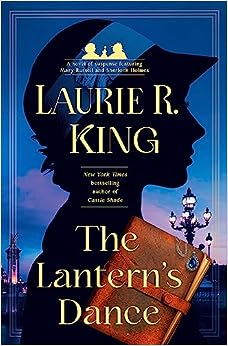 The Lantern's Dance (Mary Russell and Sherlock Holmes, #18) by
The Lantern's Dance (Mary Russell and Sherlock Holmes, #18) by 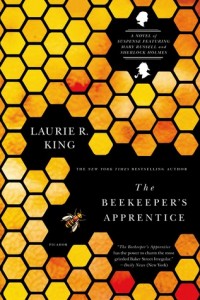 In the end, I did love this entry in the series, although it took me a bit to get there because of that slow start. But now that I’ve finished, I’m left with the impression that this is more of a family story than it is the kind of mystery that has more often been featured in this series, and in the Holmes canon and Russell Kanon in general. On this, the thirtieth anniversary of the publication of
In the end, I did love this entry in the series, although it took me a bit to get there because of that slow start. But now that I’ve finished, I’m left with the impression that this is more of a family story than it is the kind of mystery that has more often been featured in this series, and in the Holmes canon and Russell Kanon in general. On this, the thirtieth anniversary of the publication of 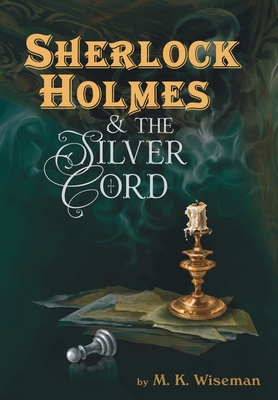 Sherlock Holmes & the Silver Cord by
Sherlock Holmes & the Silver Cord by 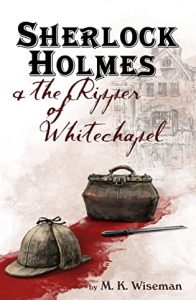 Which goes a long way towards explaining why this story, like the author’s previous forays into Holmes pastiches,
Which goes a long way towards explaining why this story, like the author’s previous forays into Holmes pastiches,  In the first outing,
In the first outing, 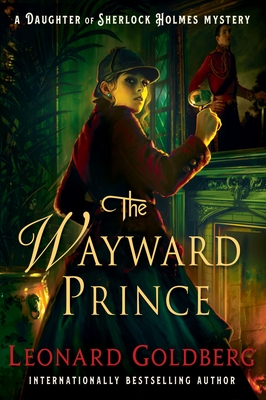 The Wayward Prince (The Daughter of Sherlock Holmes Mysteries, #7) by
The Wayward Prince (The Daughter of Sherlock Holmes Mysteries, #7) by  Escape Rating A-:
Escape Rating A-: 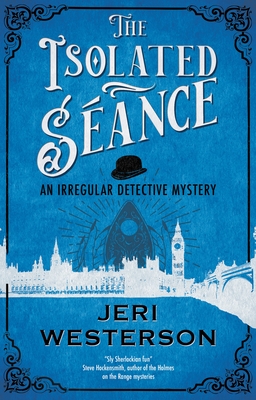 The Isolated Séance (An Irregular Detective Mystery #1) by
The Isolated Séance (An Irregular Detective Mystery #1) by 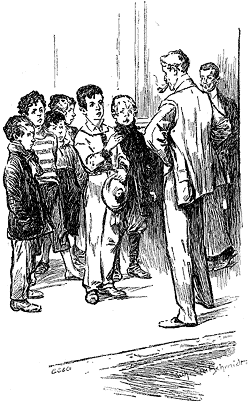
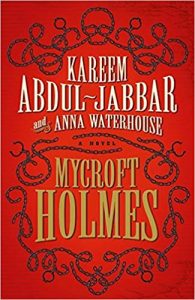 (Although both men are very young, Watson’s circumstances as a black man in a city that is prejudiced against him at every turn gives him a bit of caution and maturity that Badger sadly lacks. Watson’s perspective as someone who will always be considered an outsider even before he opens his mouth reminds this reader of the relationship between a young Mycroft Holmes and the more mature Cyrus Douglas in Kareem Abdul Jabbar’s
(Although both men are very young, Watson’s circumstances as a black man in a city that is prejudiced against him at every turn gives him a bit of caution and maturity that Badger sadly lacks. Watson’s perspective as someone who will always be considered an outsider even before he opens his mouth reminds this reader of the relationship between a young Mycroft Holmes and the more mature Cyrus Douglas in Kareem Abdul Jabbar’s 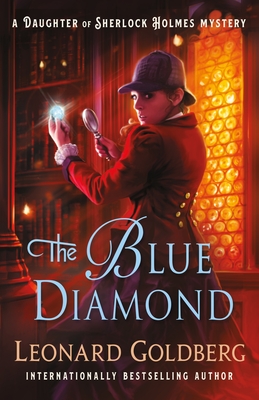 The Blue Diamond (The Daughter of Sherlock Holmes Mysteries #6) by
The Blue Diamond (The Daughter of Sherlock Holmes Mysteries #6) by 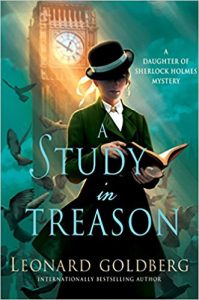 Escape Rating B: This series always gives me mixed feelings. Probably because at least within the confines of my own head, it is in dialogue with two other series (
Escape Rating B: This series always gives me mixed feelings. Probably because at least within the confines of my own head, it is in dialogue with two other series (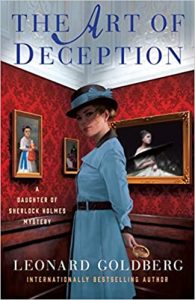 The case she has to solve here is every bit as contrived and convoluted as any that her father faced. But at least this one is hers, born out of the war the world is facing in her time and not his. This feels like a step forward for the series so I’m glad to see it.
The case she has to solve here is every bit as contrived and convoluted as any that her father faced. But at least this one is hers, born out of the war the world is facing in her time and not his. This feels like a step forward for the series so I’m glad to see it. Sherlock Holmes & the Singular Affair by
Sherlock Holmes & the Singular Affair by 
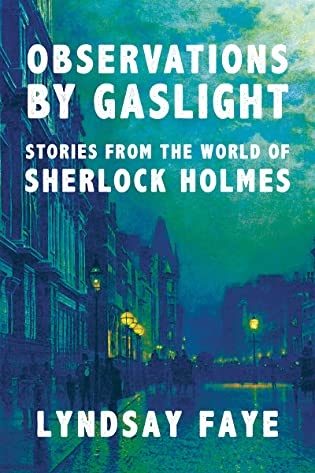 Observations by Gaslight: Stories from the World of Sherlock Holmes by
Observations by Gaslight: Stories from the World of Sherlock Holmes by 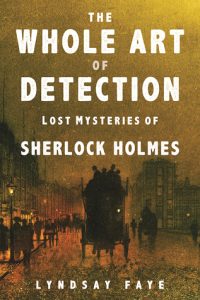 There’s a conceit in regards to Sherlock Holmes stories, beginning with Doyle himself. That Doyle was merely the publisher of stories written by Dr. John H. Watson that were somewhat sensationalized accounts of Watson’s adventures with his friend and flatmate, Sherlock Holmes.
There’s a conceit in regards to Sherlock Holmes stories, beginning with Doyle himself. That Doyle was merely the publisher of stories written by Dr. John H. Watson that were somewhat sensationalized accounts of Watson’s adventures with his friend and flatmate, Sherlock Holmes.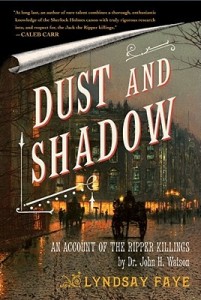 Escape Rating A-: This review is just a bit early, but I couldn’t resist picking this one up now. I’m considering it a Hanukkah present – and a marvelous one for any reader who loves Sherlock Holmes stories as I do.
Escape Rating A-: This review is just a bit early, but I couldn’t resist picking this one up now. I’m considering it a Hanukkah present – and a marvelous one for any reader who loves Sherlock Holmes stories as I do.